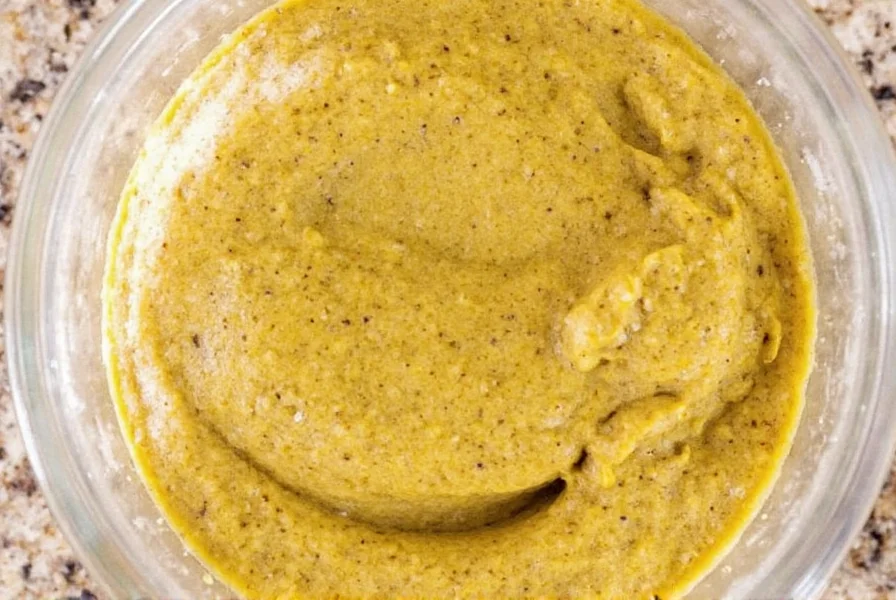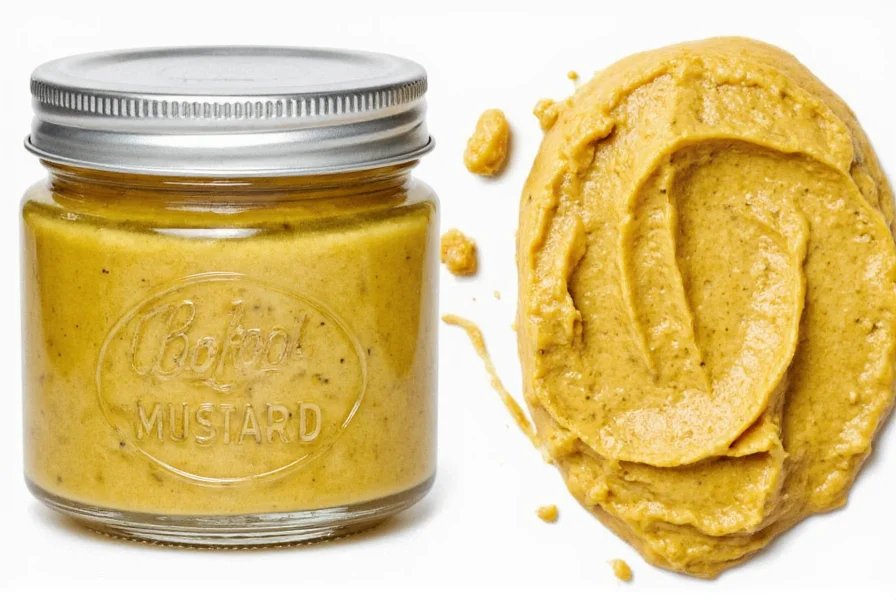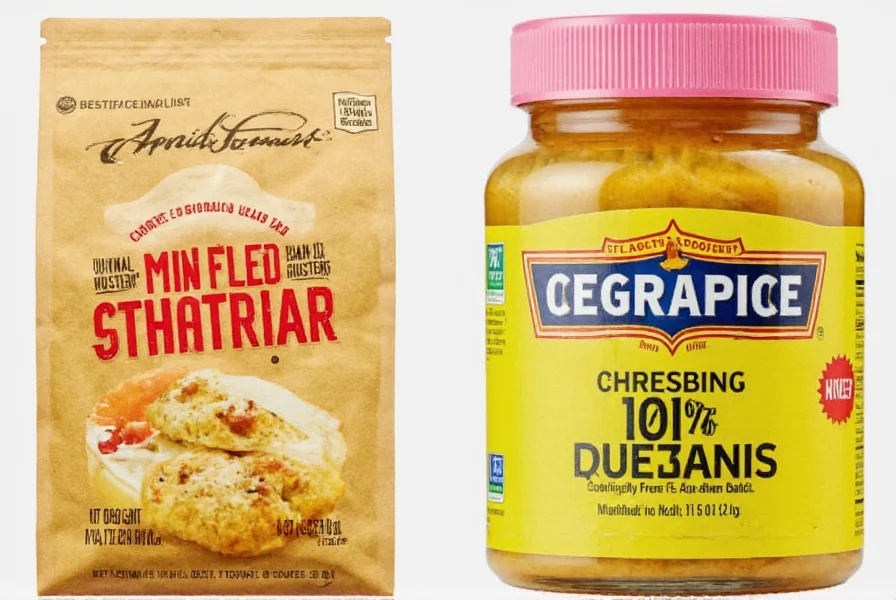When you're in the middle of cooking and realize you've run out of ground mustard, knowing reliable substitutes can save your recipe. Ground mustard, also called dry mustard powder, provides a distinctive tangy flavor and acts as an emulsifier in sauces, dressings, and marinades. Understanding what makes it unique helps identify the most effective replacements.
Understanding Ground Mustard's Role in Cooking
Ground mustard isn't just about heat—it contributes complex flavor notes ranging from tangy to slightly sweet, depending on the mustard variety. When mixed with liquid, enzymes activate to create that characteristic pungent kick. This chemical reaction is why direct substitutions require careful measurement adjustments. The powder form allows for even distribution in dry rubs and spice blends, while its emulsifying properties help bind ingredients in sauces and dressings.
Top 5 Ground Mustard Substitutes with Measurements
Each substitute works best in specific culinary applications. Here's how to choose the right alternative for your recipe:
| Substitute | Ratio (per 1 tsp ground mustard) | Best For | Flavor Notes |
|---|---|---|---|
| Prepared yellow mustard | 1 tbsp | Marinades, salad dressings, barbecue sauces | Milder tang, adds moisture |
| Mustard seeds (crushed) | 1½ tsp | Dry rubs, pickling, spice blends | More intense heat, textured |
| Turmeric + vinegar blend | 1½ tsp turmeric + 1 tsp vinegar | Cheese sauces, creamy dressings | Similar color, milder tang |
| Horseradish powder | ¾ tsp | Meat glazes, hearty sauces | Sharper heat, less tang |
| Wasabi powder | ½ tsp | Asian-inspired dishes, seafood sauces | Distinctive heat, different flavor profile |
When to Use Each Substitute
For creamy sauces and cheese dishes: The turmeric-vinegar combination works exceptionally well in macaroni and cheese or cheese sauces where you need the yellow color and mild tang without overpowering the dairy. The vinegar provides necessary acidity while turmeric mimics the color.
For salad dressings and marinades: Prepared yellow mustard offers the closest flavor match while providing necessary liquid content. When substituting in vinaigrettes, reduce other liquids by 1 teaspoon for every tablespoon of mustard added to maintain proper consistency.
For dry rubs and spice blends: Crushed mustard seeds provide the most authentic flavor profile. Grind them in a spice grinder or mortar and pestle until they reach a fine powder consistency similar to store-bought ground mustard.

Advanced Substitution Techniques
For recipes requiring the distinctive sharpness of ground mustard, try this professional chef technique: combine 1 teaspoon of mayonnaise with ¼ teaspoon of white wine vinegar and a pinch of turmeric. This creates a compound substitute that mimics both the texture and complex flavor profile of reconstituted ground mustard.
When making cheese sauce—a common application for ground mustard—add the substitute after removing the sauce from heat to preserve the delicate flavor compounds. High temperatures can cause vinegar-based substitutes to become overly acidic, while mustard seeds may develop bitter notes if cooked too long.
Substitution Mistakes to Avoid
Don't substitute whole mustard seeds without crushing them first—they won't distribute flavor evenly and create unpleasant texture. Avoid using spicy brown or Dijon mustard as direct substitutes in equal amounts, as their stronger flavors can overwhelm delicate dishes. When substituting in baking recipes like biscuits or scones, remember that liquid substitutes may alter dough consistency, requiring minor flour adjustments.
For canning and pickling recipes that specifically call for ground mustard, avoid vinegar-based substitutes as they can alter the required acidity levels. In these cases, mustard seeds are the only safe alternative, used at a 1:1 ratio without crushing.

Creating Your Own Ground Mustard Substitute Blend
For frequent cooking needs, prepare a versatile dry substitute blend: combine 2 parts turmeric, 1 part paprika, and ¼ part cayenne pepper. Store in an airtight container for up to six months. Use 1½ teaspoons of this blend plus 1 teaspoon of vinegar or water per teaspoon of ground mustard required. This mixture approximates both the color and flavor complexity of authentic ground mustard while providing consistent results across various recipes.
Frequently Asked Questions
Can I use Dijon mustard instead of ground mustard?
Yes, but with adjustments. Use 2 teaspoons of Dijon mustard for every 1 teaspoon of ground mustard required, and reduce other liquids in the recipe by 1 teaspoon. Dijon has a stronger, more complex flavor than standard ground mustard, so it works best in robust dishes like meat marinades or hearty sauces, but may overpower delicate recipes like cheese sauce.
What's the difference between ground mustard and dry mustard?
Ground mustard and dry mustard are the same product—both refer to mustard seeds that have been dried and ground into powder. The terms are used interchangeably in recipes. True mustard powder contains only ground mustard seeds, though some commercial products may include turmeric for color or salt for preservation. Check your container's ingredient list for the purest substitution results.
How does ground mustard affect texture in sauces?
Ground mustard acts as a natural emulsifier in sauces, helping to bind fat and liquid components together for a smooth, stable texture. When substituting, particularly in cheese sauces, the emulsifying property is crucial. For best results with non-mustard substitutes, add the alternative after removing the sauce from heat and whisk vigorously to maintain smooth texture without separation.
Can I make my own ground mustard from seeds?
Absolutely. Grind 1½ teaspoons of yellow mustard seeds in a spice grinder until fine. For immediate use in recipes requiring reconstituted mustard, mix the ground seeds with 1 teaspoon of cold water and let sit for 10 minutes to activate the enzymes. This homemade version closely matches commercial ground mustard's flavor profile and works perfectly as a 1:1 substitute.
Why does my substitute make my sauce bitter?
Bitterness typically occurs when mustard substitutes are cooked too long or at too high a temperature. Mustard's flavor compounds break down under prolonged heat, creating bitter notes. To prevent this, add mustard substitutes near the end of cooking, remove the dish from heat before stirring in the substitute, or use less substitute than recommended and adjust to taste. Vinegar-based substitutes are particularly prone to bitterness when overheated.











 浙公网安备
33010002000092号
浙公网安备
33010002000092号 浙B2-20120091-4
浙B2-20120091-4